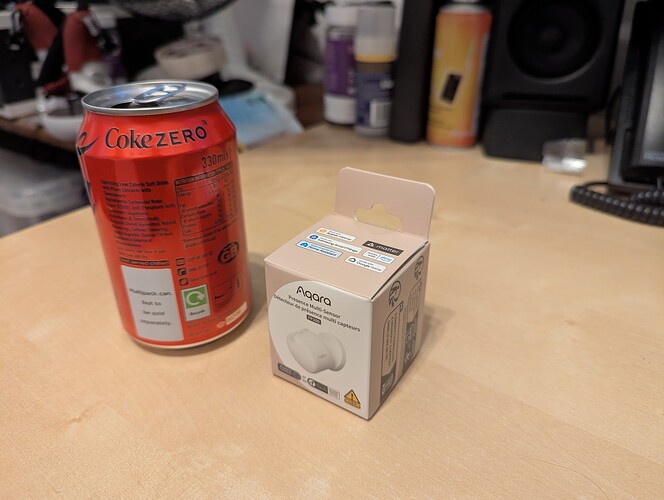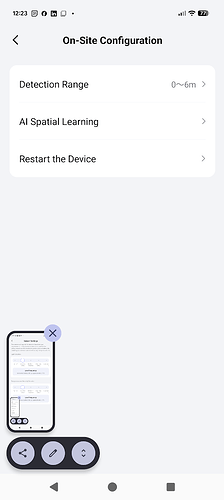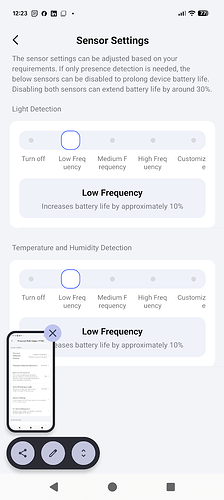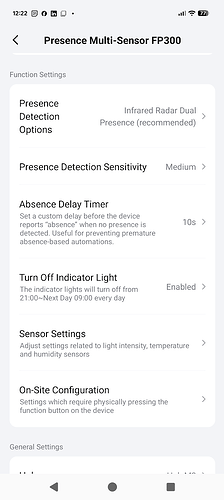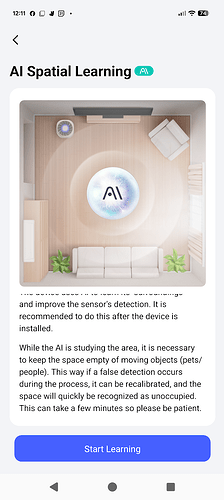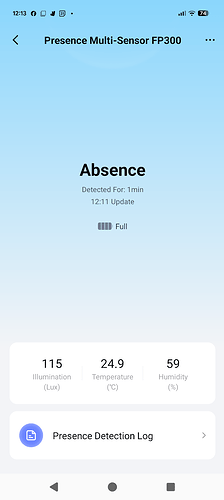My FP300 arrived the other day and I’ve had a bit of an initial play with it so thought I should share my first impressions.
Let’s start with unboxing and install. It’s a lovely little compact package (Coke can for scale). Mounting is done using the magnetic back, and a large washer is supplied to provide a surface to attach to. This can be stuck onto your wall either with the screw or 3m stick pad provided. I’m using the latter on a fairly shoddily painted wall and it’s not gone wandering yet. Realistically, the surface area is going to be plenty to hold the weight of the sensor.
Setup is a msotly good experience, and the downsides are not really down to Aqara. Everything through the Aqara app is fine, but Android has a habit of trying to get you to use Google Home when it thinks it’s trying to add Matter devices. This is a bit annoying, but you can work around it.
You can choose to communicate with the sensor over either Thread or Zigbee. I tried both (with a M3 hub), and switching between them is also relatively easy to do, though it does take a bit of time. It’s not just a toggle, it has to reload some basic firmware, then go through adoption. Realistically, you’re not going to be flicking between the modes, so it’s not a real usability problem. One thing I would question is that Matter is listed as the first option, leading you to think that this is the preferred choice. I’m not sure that should be the case given that the settings for the device in that mode are far more limited than those in Zigbee. Maybe this will change with future updates.
Onto those settings, in Matter mode you can change the sensitivity of the device with a Low/Medium/High range selector. You can also change the absence delay so that if you pop out of range and back in it doesn’t necessarily register an absence. That’s a small thing, but nice to have built into the sensor to reduce noise and not have to handle it at the automation end.
In Zigbee mode you have a lot more control. The sensitivity setting lets you choose a distance range, you can change the detection mechanism, disable the indicator, and change other sensor settings. It’s clearly a superior setup, though likely fire and forget once I have it installed.
It also has a setting to tune AI Spatial Learning. What does this do? Couldn’t tell you. There’s literally 0 feedback once it has completed the process. Might as well be magic.
Performance of the sensor in action is very good! All the sensors seem in line with the state of my room at any given time, and from its corner mount position in a rectangular room it can pick up my presence anywhere I’ve moved to. I’ll see how it now performs over time and once I set up some automations with it, but from my initial pass it is certainly doing its job well. The app, however, could do with some tweaks. If you’ve got the presence card open, and the presence state changes, the card does not refresh until you go back to the main menu and re-enter. Going to the log, or the settings, and coming back doesn’t update it (even though the log correctly reflects the status). This feels bad from a UX perspective, especially given the “pulsing” animation on that card which gives you the impression that this is a live view. I was definitely there when this screenshot was taken, and it knew it!
So all in all, some very good first impressions. Easy setup, easy install, and it just does the job. A few tweaks to the UX needed, but then as I mentioned earlier, once you’re done with a lot of these pieces you’re not going to be back in there often. A smart home device that is working well shouldn’t require your constant attention.
